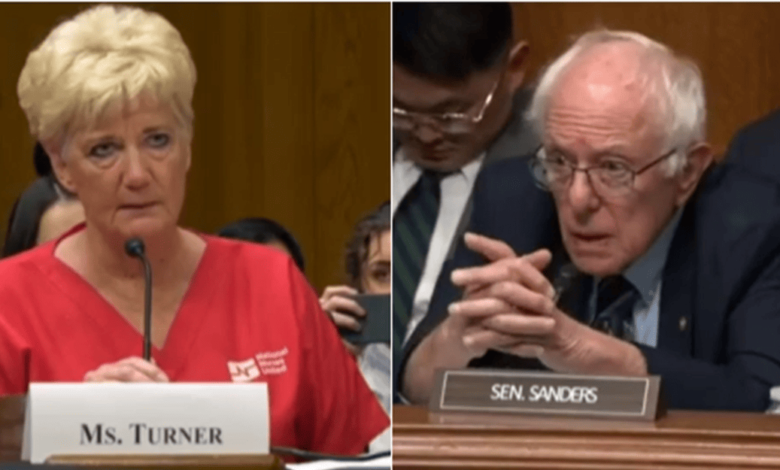Bernie Sanders Sounds Alarm on Nurse Staffing Crisis: ‘Patients Are Suffering’

The U.S. Senate Committee on Health, Education, Labor and Pensions (HELP) recently convened a hearing on the nation’s worsening nurse staffing crisis. Chaired by Senator Bernie Sanders, the hearing brought together hospital leaders, healthcare experts, and frontline nurses—including National Nurses United (NNU) President Mary Turner, RN—to examine how unsafe nurse-to-patient ratios are fueling moral distress, turnover, and patient harm.
The discussion aimed to identify legislative solutions to strengthen the nursing workforce and ensure patients receive safe, high-quality care. Sanders emphasized that the testimony would help guide ongoing efforts to pass meaningful staffing legislation at the federal level, building on state models like California’s nurse-to-patient ratio law.
Senator Sanders began by describing what he has heard repeatedly from nurses across the country. He said, “Nurses have come into my office with tears streaming down their eyes… They said, ‘We were trained to do our jobs. We can’t do our jobs. We don’t have the staffing to do our jobs. It breaks our heart… Patients are suffering—sometimes dying. And we want help so we can do our work.’”
Mary Turner, RN, shared that nurses are facing moral distress, not simply burnout. “It’s not called burnout—it’s called moral distress when nurses go home,” she said. “Especially our young nurses, who come out wanting to make a difference but end up crying in their parking lots because they feel defeated.”
Turner made it clear that the problem is not a shortage of nurses but a failure to support them. “We do not have a shortage,” she stated. “We are not treating our nurses right, and we need to start treating them right because they are the backbone of health care.”
In her written testimony, Turner cited evidence showing that unsafe workloads jeopardize patient safety. “For every additional patient assigned to a nurse’s workload, there is a 7 percent increase in hospital mortality,” she explained, calling on legislators to establish national nurse-to-patient ratios modeled after California’s standards.
Sanders also linked the safe staffing debate to broader questions of healthcare access. “Health care is a human right,” he said, a position Turner strongly agreed with.
Turner warned that millions losing Medicaid coverage would have devastating consequences for hospitals and communities. “They will end up in the ICU receiving the most expensive care,” she said. “They’re not going to stop coming to the hospital. It’s uncompensated care.”
The message from Senator Sanders and Mary Turner, RN, is unmistakable: fixing the staffing crisis is not optional—it’s essential to the survival of both nurses and patients. The data are clear, the experiences are raw, and the stakes are life-and-death.
Every nurse who has gone home in tears after an unsafe shift understands what Turner called “moral distress.” It’s the feeling of being unable to deliver the care your patients deserve because the system has failed you. As Sanders reminded lawmakers, this is not about asking for more money—it’s about giving nurses the tools and support they need to do their jobs safely.
Real change will come when hospitals and policymakers recognize that safe staffing saves lives, reduces turnover, and restores trust in the profession. Until then, nurses will continue to raise their voices to demand what should never have been negotiable: the right to care for every patient safely, every time.
🤔 What are your thoughts on this hearing? Let us know in the discussion forum below.
If you have a nursing news story that deserves to be heard, we want to amplify it to our massive community of millions of nurses! Get your story in front of Nurse.org Editors now – click here to fill out our quick submission form today!







